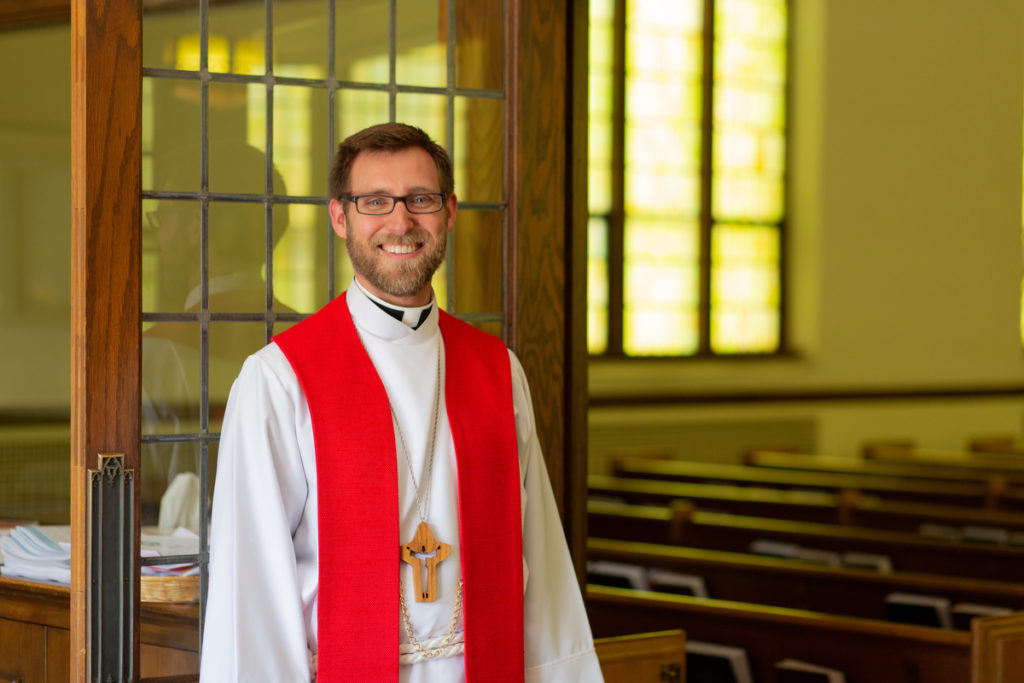First off, this is not an article about the relative merits of traditional and/or contemporary hymns and songs. So even if you suspect you might have a “chip on your shoulder” on that particular issue, you can calm down and read on. This article is about congregational singing regardless of whether your church sings traditional hymns; or contemporary Christian songs; or a blend of both. I want to focus on what is involved in facilitating quality congregational singing. In other words, what pastors and congregational leaders can do to encourage a high percentage of your members to actually participate and sing aloud during worship.
Before I get to some practical suggestions for improving congregational singing, it’s important to recognize two primary factors which tend to undermine congregational singing and decrease the percentage of worshipers who join in and actually participate.
A. The number of worshipers in attendance on any given Sunday. Now if you have more than one weekly service this issue is, obviously, about the number of worshipers attending at a given hour; not your cumulative, total attendance for your two (or more) services combined. Here’s the general rule related to your attendance at any one service: The more worshipers present the more likely the majority will feel comfortable singing aloud. Conversely, the fewer worshipers, the more essential it is to facilitate singing when selecting and leading your hymns and songs. And keep this in mind: It can be physically and mentally exhausting to sing aloud if you are one among a very small number of worshipers.
B. The median age of your worshipers is also an important factor. If a majority of those in attendance are over 65 to 70 years of age, this is an added challenge that should not be ignored, and one more reason you need to do all you can to facilitate and encourage congregational singing.
I suspect that, in many smaller and more elderly worshiping communities, the lack of participation in congregational singing is one factor—no doubt among others—directly leading to decreasing worship attendance over time.
So let me address this ministry challenge for a hypothetical Lutheran congregation that has one weekly service. This church—Grace Lutheran—has a worship attendance average of between 25 and 65. And the median age of their worshipers is between 55 and 70. And let’s assume that the acoustics in Grace Lutheran’s sanctuary, though not ideal, are adequate.
Grace Lutheran’s pastor is Rev. Olsen. Now like most pastors, Rev. Olsen can indeed carry a tune. (In fact, like many pastors, the best experience Pastor Olsen ever had experiencing quality congregational singing was at seminary chapel services.) However, though he can indeed “carry a tune”, Rev. Olsen does not have a solo-quality voice and does not consider himself a songleader. More important, he has always considered hymns to be an integral part of worship; and is painfully aware of the poor quality of congregational singing at Grace. So Pastor Olsen starts searching online for articles about “Facilitating and Encouraging Congregational Singing in Smaller Churches”. After exhaustive research, these were among the most helpful and practical suggestions he found for improving congregational singing at Grace.
1. The majority of worship hymns and songs should be familiar “favorites” among your members. How was he going to discern which compositions fit this description? A survey, of course. And from the results of this “List Your Favorite Hymns and/or Christian Songs” survey Pastor Olsen came up with a “Top 40 (or 50)” list. Not that all worship songs on a given Sunday needed to be from this list. However, more often than not, Rev. Olsen made sure that at least one or two of the hymns at a weekly service was from the list of “favorites”. And when it came to hymn and song selection in general, Pastor Olsen learned the importance of avoiding hymns where the melody had a range of much more than one octave. (In other words, seven whole notes.) This is, he learned, especially important for older worshipers who are discovering that they can’t “reach the high notes” like they used to.
2. The next suggestion pastor Olsen found for improving congregational singing is to provide the best possible music leadership. Since Grace Lutheran had an organ they could no longer afford to “keep up”, and since they had been unable to find a competent organist after their previous organist retired, Pastor Olsen realized that something needed to be done in this regard. He decided his best option was to find a competent song leader, accompanied by a competent pianist, to play a high-quality piano. (Which—fortunately—Grace Lutheran already owned.) He also learned that for this songleader-and-pianist duo to be effective, they needed to lead from the front of the sanctuary, not the back balcony. But unfortunately, no one among the members at Grace had the necessary confidence to be a solo worship song leader. However, Rev. Olsen did convince three members with good voices to lead congregational singing as a trio. And for the pianist? For that position he needed to find and hire someone from the surrounding community. Fortunately he found the right person who not only had the necessary keyboard skills, but who was familiar with many Christian hymns and songs.
3. A third suggestion in the articles Pastor Olsen read was that hymn and song lyrics should be projected for worshipers. This was to serve two particular goals: a) So worshipers would be looking, while singing, in the general direction of the song leaders, and b) so worshipers were not singing with their heads buried in their hymnals or songbooks. Pastor Olsen initially had some misgivings about this suggestion. After all, there was the considerable expense of purchasing a projector and screen for the sanctuary, and the fact that it was not feasible (due to limited space on a screen) to include musical notes along with projected lyrics. But Pastor Olsen was pleasantly surprised by the difference projected lyrics made in the quality and volume of congregational singing. And to minimize member complaints, the hymn/song lyrics were also printed out each week in the worship bulletin for those who preferred that option. (Not to mention the fact that the hymn number was also listed in the bulletin for those who wanted to sing from the hymnals still located in the pew racks.)
There were other suggestions Rev. Olsen found in his online research. For example, the recommendation that unfamiliar songs and hymns should always be taught, and that new hymns or songs should always be a part of the worship service at least two consecutive Sundays. In the past Grace Lutheran members would often have to struggle through new hymns that were totally unfamiliar; without any instruction or practice of any kind from worship leaders. Another recommendation: That worshipers should rarely be expected to sing more than four verses of any hymn.
Suffice it to say that congregational singing at Grace Lutheran Church markedly improved—once these changes were implemented—and improved in a matter of weeks, not months.
Pastor Don Brandt



























It is said, “As we pray, so we believe.” I have come to realize that it is, “As we sing, so we believe.” those verses, sung over and over thru the years become the theology of the worshiper. Someone else has realized this; some hymns and praise songs are subtly twisted away from God and have become rewritten as “woke.” (My opinion!) Worship is more important than preaching. (And yes, I am a Pastor-retired) By the way, after forty + years, I found that a praise song has a refrain, and a hymn does not…neat, huh?